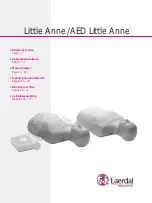
2
Fluid Power Car User Guide 60070 V0113
Principles at Work
Hydraulics
A hydraulic system is one that uses fluid as a force. The principle behind
a hydraulic system is simple: Force applied at one point is transmitted to
another point using a fluid.
Pushing on one end of a syringe filled with water (a hydraulic system)
creates an equal and opposite reaction on the other syringe. On the
Fluid Power Car, a syringe is connected by a tube filled with water to a
mechanical part of the robot. Force is what causes the part to move.
Linear to Rotational Motion
The Fluid Power Car is an example of reciprocal linear motion being
converted into rotary motion. The syringe being pulled back and forth –
the reciprocal linear motion – is converted to rotary motion – the wheels –
thanks to two one-way bearings and a rack-and-pinion gear train.
The car’s gear train features a top and bottom rack on the axle with the
one-way bearings, so the linear motion moves in one direction no matter
which direction the syringe plunger goes.
One-Way Bearing
Operation
One-Way Bearing Operation
in Fluid Power Car
Engaged
Position
(shaft turns
with gear)
Disengaged
Position
(shaft does
not turn with
gear)
Shaft
rotates due
to rotation
of the far
side gear
Shaft
rotates due
to rotation
of the near
side gear
Gear
Bearing roller
One-way bearing
Axle
Gear rack
Far side gear
Far side bearing
Near side bearing
Near side gear










